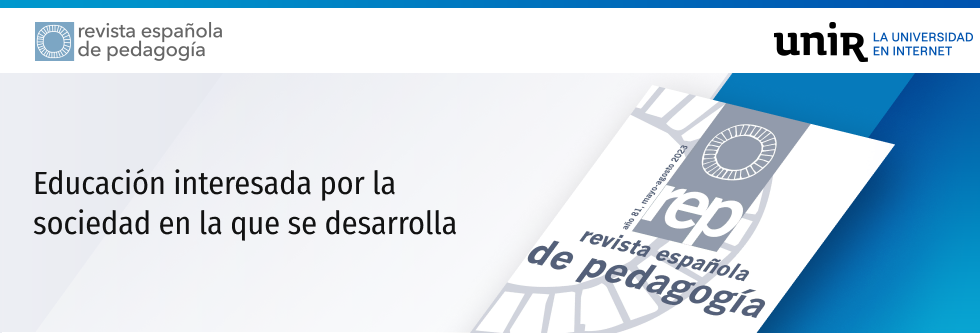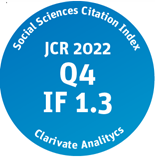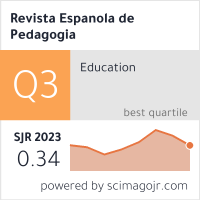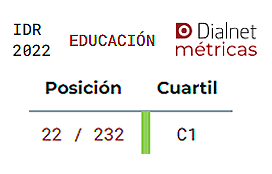Santos Rego, M. A., Valle Arias, A., & Lorenzo Moledo, M. (Eds.). (2019). Éxito Educativo. Claves de construcción y desarrollo [Educational success: keys for building and developing it]. (Anaïs Quiroga Carrillo)
Resumen
The contemporary knowledge society has posed new academic challenges for students and teachers alike in recent years. Educational success currently goes beyond qualifications and social acknowledgement, as it encourages moral and material growth, personal self-confidence, and confidence in the people who help learners in the process. Clearly we mean teachers. These professionals have the task of accompanying students and providing the knowledge, affection, and support they need to overcome the difficulties they inevitably encounter on the winding path of learning. ,,
In the words of the editors of this work, educational success can be understood as the capacity we acquire to self-propel our will, associated with the cognitive regulation of learning, enabling feedback for personal internal motivation and epistemic curiosity for learning. This phenomenon is also imbued with personal learning experiences and their cognitive and/or emotional impacts, which undoubtedly determine the acquisition of the keys for building and developing success. ,,
This success, requires knowing how to manage the errors and mistakes that occur throughout the academic journey. And the fact is that learning how to manage failure is part of the process, another step that allows better progress. This undoubtedly does not neglect the individual energy and effort that combine with pedagogical intervention to make it possible for learning to be a successful motivation. ,,
And this topic cannot be approached without analysing all of the factors that have an influence on educational success from a critical perspective. Academic attainment cannot be understood as a way certifying the acquisition of knowledge or certain skills. From a pedagogical perspective, it must involve a subsequent aim, totally separate from market assumptions, as a value that catalyses knowledge and fosters civic-moral development and so in some way has an effect on the community. ,,
On the other hand, this phenomenon cannot escape from the scientific sphere — nor should it — and this is why this work attempts to offer an approach to a concept as complex as educational success, in all of its aspects and conditions for opportunity. Researchers with notable academic careers from all over Spain have come together to follow a common path, undoubtedly offering a variety of theoretical approaches that are essential for a correct understanding of educational success. ,,
Their joint efforts have taken shape in the book Éxito Educativo. Claves de construcción y desarrollo, a work of careful analysis by the authors who, over fourteen chapters split into three different sections, consider in depth the principal questions that have inspired the most interest in the field that concerns us. ,,
The first chapter analyses the construct of motivation and how its interaction with students’ cognition influences learning and academic performance. It considers the effect of self-referenced beliefs, students’ personal interests, and the relevance of the utility attributed to academic work. The authors also consider the role of achievement goal orientation, concluding with the importance of action monitoring strategies. ,,
Chapter two covers the contentious debate surrounding homework, providing arguments for and against setting it. It considers in depth the variables involved in doing homework, such as motivation, volume of homework, time spent on it, and the teacher’s and family’s involvement, concluding with various recommendations for educational practice. ,,
Chapter three is dedicated to students with lower performance than expected, a topic that is considered in the English-speaking sphere in particular. Specifically, it considers relevant questions for identifying and evaluating these students, the characteristics that define them, and the key tools for reversing failure among them. ,,
Chapter four alludes to study strategies for improving learning, most notably the construction of summaries or figures, generating ideas and developing mental images. The authors go on to describe mechanisms for supervision of an adequate retention of what is studied, existing evidence regarding time management, and the importance of seeking help in this process. ,,
The first part of the book ends with chapter five, which considers the role of emotional intelligence in educational success. To this end, it offers an approximation to the term emotion, focussing on how this permeates individuals’ life experiences and exploring its influence on the development of intelligence. ,,
Chapter six considers the necessary change of methodological paradigm that must occur in classrooms in order to include a series of active methods, based on imagination and creativity, and foster students’ success. Some examples of these are project-based learning, group techniques, collaborative techniques, dramatisation, and service-learning. ,,
Chapter seven considers the important contributions neuroscience has made to the field of education, most notably in physical exercise, arts, and positive emotions, which act as powerful learning facilitators. Its argument then focuses on the principal challenges the contemporary school must face, especially in methodological terms. ,,
Chapter eight, on new technologies, describes the technological innovations that have recently entered the educational setting, such as e-learning 2.0, the flipped classroom, and MOOC courses. The authors also mention internationally applied models for integrating these methods into pedagogical practice and make suggestions for a more flexible, open, and personalised educational proposal. ,,
The second part of the book ends with chapter nine, which is dedicated to the process of guidance as a fundamental pillar of educational success. In it, the main areas of guidance actions are considered as well as the moments of academic transition to which this should be adapted. ,,
Chapter ten considers the concept of school adjustment, which encompasses the attitudinal, behavioural, and cognitive aspects needed to assimilate content and adapt to the school setting, which principally depend on academic performance, social relations, and satisfaction with school. It also examines the influence of the family, family/school communication, and the involvement of the community on academic achievement. ,,
Chapter 11 covers the educational management of cultural diversity. The authors first consider the concept of educational success, examining how it differs from school success and then moving on to the chapter’s main debate. To this end, they refer to the intercultural education model, which is vital for achieving success in students from migrant backgrounds, and they discuss some of the successful results of a recent intervention programme carried out with these boys and girls, the ECO-FASE programme. ,,
Chapter 12 covers measures in educational and employment policy aimed at ensuring the inclusion and employability of young people who are at risk. Specifically, it sets out the functioning of Spain’s Social Guarantee Programmes and Basic Professional Training, insofar as they encourage the educational success of young people whose initial situation was marked by failures and problems with learning. ,,
Chapter 13, on lexical competence and academic success, analyses the extent to which intelligence tests evaluate verbal comprehension and how this is worked on in the environment which, in the view of the authors, is most decisive: the school. ,,
The last chapter considers mathematical competences. It describes early mathematical skills, models for developing number sense, and the learning difficulties that can occur in this field from a psycho-evolutionary perspective. It then proposes specific tasks and standardised tests for measuring mathematical competence and some of the most successful programmes for learning it. ,,
In conclusion, this is a comprehensive multidisciplinary work with a harmonious structure that can be read as a whole or focussing on specific selected parts, in which the reader can find the most important aspects that academic literature has revealed regarding sustained success through education. ,
Anaïs Quiroga Carrillo ■ ,,,,
Citación recomendada | Recommended citation
Carrillo, A. Q. (2023) . Santos Rego, M. A., Valle Arias, A., & Lorenzo Moledo, M. (Eds.). (2019). Éxito Educativo. Claves de construcción y desarrollo [Educational success: keys for building and developing it]. (Anaïs Quiroga Carrillo). Revista Española de Pedagogía(1). https://www.revistadepedagogia.org/rep/vol0/iss1/70
Licencia Creative Commons | Creative Commons License
Esta obra está bajo una licencia internacional Creative Commons Atribución-NoComercial 4.0.
This work is licensed under a Creative Commons Attribution-NonCommercial 4.0 International License







Commentarios | Comments
Santos Rego, M. A., Valle Arias, A., & Lorenzo Moledo, M. (Eds.). (2019).